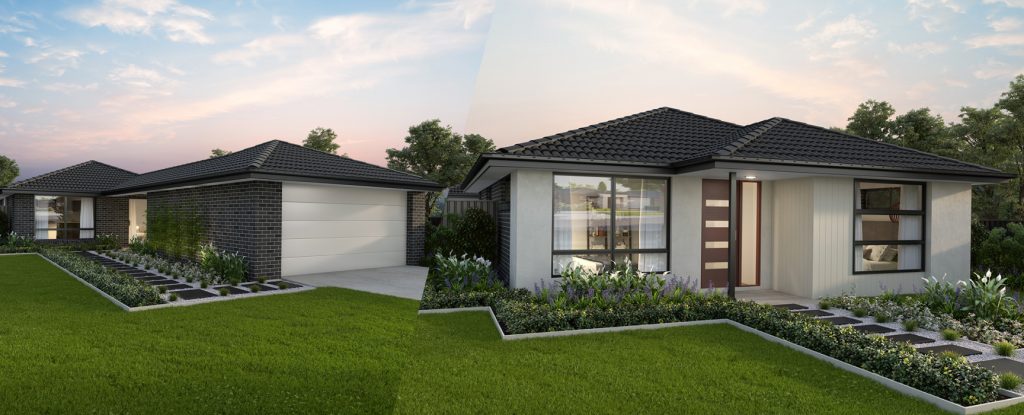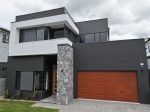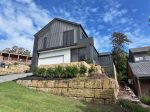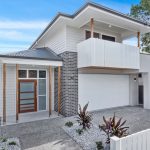Shelter remains one of the three basic amenities every human needs for comfortable living. However, it has become increasingly expensive to construct proper housing due to the rising cost of human labour and building material.
So how much do you need to build a house?
There is no straightforward answer to the question. Building a house in Australia is no easy task. Estimating the average cost of building a home might be tricky because of the varying construction materials and human labour prices. Besides, you have to consider a list of factors when estimating how much you need to build your house.
Some of the factors that affect the cost of building a house are;
• The proposed size of the building
• The proposed location of the building
• The quality of construction materials
• Choice of building contractors
A detailed consideration of these factors would give you a ballpark estimate of the cost incurred when building a house.
Building a house in 2020:
The effects of coronavirus pandemic on building costs
2020 has been a challenging year for the whole human population. While the world is still reeling from the effects of the coronavirus epidemic, industries have been on lockdown since it was declared a pandemic. Even now, when the lockdown have been eased, the impact of this virus still lingers. Since building and construction are considered an essential service, the construction industry was never shut down even though we can see the economic effect of this pandemic. Job losses, economic uncertainty, and hike in the prices of construction materials are some of the noticeable effects of coronavirus on the building sector. Also, many construction firms have reported a drop in sales even though builders are willing to offer their services at a reduced rate. Many construction companies might get shut down due to the economic meltdown as a result of this virus. Besides, you also have to consider the price of human labour. These prices are not stable because different companies have different billing rates.
PRO TIP
Don’t be deceived by the prices that builders advertise on their billboards. Those prices are usually the starting prices for their building services. It would be definitely more than that. So, plan accordingly. However, if you are looking for this kind of service, where the builder handles everything in your home, and all you have to do is move in, then you have to ask for the cost of their “Turn-key packages”. Let’s have a look at how the factors mentioned above and how they affect the cost of building a house in Australia.
The effects of location on building costs
Ideally, the standard building cost for a house with a basic finish cost ranges from $900 to $1400. The cost of building a home depends greatly on location. Different areas in Australia have varied property value due to several factors such as supply and demand, and the nature of land use.
Below is a list of building costs in notable areas in Australia to observe how the price changes from city to city. This data was obtained from BuildSearch.
City
Adelaide, South Australia
Adelaide, South Australia
Brisbane, Queensland
Brisbane, Queensland
Melbourne, Victoria
Melbourne, Victoria
Perth, Western Australia
Perth, Western Australia
Sydney, New South Wales
Sydney, New South Wales
Price per/m2
$900
$1030
$1210
$1390
$1180
$1330
$950
$1000
$1190
$1290
Finish
Basic
Medium
Basic
Medium
Basic
Medium
Basic
Medium
Basic
Medium
Effects of size of the building costs
Easy, the bigger the size of your building, the more you spend and vice versa. Bigger buildings require more construction materials and consequently, more cost incurred. For example a 4 bedroom house with a double garage, kitchen, ensuite and bathroom as the area of the house gets bigger the cost per square metre generally comes down. But take a home with the same rooms and make it smaller, the cost per square metre rises. The most expensive rooms in a house are the bathroom, ensuite and kitchen. These are common to most homes. What varies are the sizes of the rooms.
Effects of quality of material on building costs
The type and quality of fittings used in the construction of your building have a direct relationship on cost. The more quality and sophisticated it is, the more you can expect to spend. As shown in the table above, medium finish cost more than a basic finish. Also, you should expect to pay a lot more if you fancy a high-end home with custom design finish-as much as $3000
The effect of the choice of building contractors on building costs
The choice of the builder is a crucial decision on any building project.
It would reflect the client’s priorities, particularly those related to cost and quality. High-profile builders charge more for their services.
Calculating the average price to build a house in Australia
For us to get an accurate valuation of building cost, we have to translate the price per square metre into actual monetary value for it to be understandable. In fact, the price per square metre does not give an accurate description of the proposed cost of your house.
Imagine going to the bank and saying,“I need to borrow $1190 per square metre”. It is definitely going to sound confusing to bank officials.
To help you understand the full costs of building a house in Australia, we’ve run the numbers on a standard home build of around 150-170m2. Based on this sizing, if you want to develop three or four-bedroom home with one or two bathrooms, prices typically start as follows:
A budget-style, basic home
The minimum cost for a 3-bedroom home is
$160,000 while a 4-bedroom home cost at least
$190,000. Turnkey packages cost extra, so you can expect an addition of $18,000-$20000 to your building fees.
A standard home
For a standard home, it cost at least $160,000 for a 3-bedroom home while a 4-bedroom home has a minimum cost of $190,000. If you fancy the turnkey package, add between $20,000- $22000 to your building budget.
A premium, higher-end home
The cost for a high-end home ranges from
$200,000 for a 3-bedroom home and from
$220,000 for a 4-bedroom house. For a turnkey package, add approximately $22,000-25,000.
It should be noted that an additional story may add at least $80,000 to your building costs.
Learning the vocabulary of the building industry
Like all other sectors, the building industry has its own set of terminologies and industry jargons that may be tricky to understand. As a result, this may influence your ability to negotiate or price your building fees. Below is a list of terms that maybe included in your building contract, which are important to understand.
Provisional Sums
A provisional sum is an estimated amount of money that is determined by the builder, according to how much they believe the relevant job or material and labour will cost. Often the builder can’t put a fixed cost on certain parts of the job at the time of providing a quote or signing the building contract because of unknowns.
For example, while your site may look flat and the builder quotes as such when starting the work. They may discover large clumps of rock that need to be removed and levelled before the slab being laid. Or when the builder starts digging your foundations, they realise they have to dig down further to hit firm footings, which will eventually require more concrete to be poured. At times like this, you’ll need to pay an additional sum to the initial contract price, as the provided allowance has been exceeded.
PRO TIP
It is a good idea to make an allowance for unforeseen circumstances in your budget to allow for fluctuations in provisional sum prices. 10% of the total building cost should be enough to cover all miscellaneous expenses.
Prime costs
A prime cost is a variable cost. It is subject to change during the construction of your home. It includes things like fixtures and fittings such as tiles, doors and taps, as these items may change depending on your final choice. An estimated cost of these installations is usually provided when signing the building contract. Then, depending on your specification of the finishes during the build, these prime costs items may cost more or less if you decide to change them along the way. It should be noted that the prime cost depends on your preferences of fixtures and fitting. Choosing an expensive installation would no doubt increase the money spent. Conversely, you can also trim expenses if you opt for basic or standard fixtures, fittings and finishes.
What additional costs should you expect?
As stated earlier in this article, estimating the building cost can be tricky. Suppose your proposed building is a traditional brick home. In that case, you may be able to finance your building cost with a moderate budget. However, once you start including additional features to your building such as driveways, fences, upgrades to furniture and fittings, and retaining walls, your cost might increase considerably. Apart from the main cost of building, some additional expenses may be incurred on your building site. A typical example is the site cost. The site cost is the money spent to prepare your block of land for construction activities. These are usually completed by your builder, and in most cases, the site costs are charged separately from the main building cost. Site costs in Australia varies from $15,000 to $25,000. However, again, the location, size and slope of the land can have a substantial impact on the final charges.
Some examples of the expenses involved in a site cost are:
• Landscaping
• Fences
• Retaining walls
• Connection to essential services such as water, sewer, electricity and gas
• Site clearance (trees, roots, bushes)
• Site survey
• Soil tests
Getting started with building your house
The first step to building your house is to hire a competent builder. After giving the builder a description of the layout and design, they will make plans and prepare all the necessary legal documents for your building. The next step is the ‘prestart meeting’. This is the point where your house plans are approved and finalized after the approval of your building project. Also, the builder asks for final confirmation on the design aspects of your building like wall colours, light fittings, and the materials to be used on the walls and floor. It is common practice for builders to use the prices for the cheapest materials and the most basic fittings for building projects. However, choosing custom materials and expensive fittings could cause your prime cost to rise. Most people choose to employ upgraded features in their building project.
Some of the parts that you may wish to upgrade during this process are:
Roofs
You may decide to pick a roofing material such as metal sheeting and tiles. If you choose to use a more expensive roofing material, your cost is bound to increase.
Tiling
The builder usually allocates an allowance per square metres for tiling. However, this can change depending on the quality and size of the tiling material you choose for your project.
Fixtures and fitting
Fancy, nonstandard taps and European appliances cost more than the standard Australian-made fixtures and fittings. Also, labour costs may increase if you select installations that are complicated to install. For instance, installing a fully ducted air conditioning system can cost as much as $10,000 (or more for two-story home).
Kitchen
There are several kitchen styles you could incorporate into your building project. Whatever design you pick would contribute to the cost.
Electrical wiring
If you decide to change your lighting layout from what has been initially drawn, this can add costs. For example, if the specifications in your contract allow for one standard light per room, but you wish to have multiple downlights, more money would be spent.
After you have made your choice, the builder can start building your house.
Other extra costs
Apart from the building costs and the additional prime costs, some extra charges could come up. In fact, they might end up costing you a significant amount of money.
Some of them are;
Soil quality tests:
Soil tests are vital to analysing the grade of your soil. This test is used to determine what building procedure would be suitable for the project. One of the first things engineers do is a soil test. They do this by drilling some boreholes and acquiring samples of the soil. The best soil classification is the S. classification soil.
Class S soil is made up of slightly reactive clay and is the easiest to work with because the house foundation can quickly be built on it.
The slope of the land:
The easiest site to build on is a flat block. If your block slope is slant, you have to pay extra to build more foundations or to cut and fill the site with to make it flat and possibly for retaining walls.
Flood prone areas:
Building in flood-prone areas require complex building procedures. The house has to be built above the natural ground level to cope with excessive rain or floods, and this can add to the construction cost.
Contract variations
Variations can also influence your building costs. Variations are changes to the contract which are made after you have signed it. Maybe you changed your mind about the kitchen design and want to use another style. The good news is you can easily change it. While the bad news is, it would cost you! Variation costs increase your building fees, and you should avoid them as much as possible.
Builders usually have a mark-up of about 20%-25% on variations. On top of this, they also may charge a $250 as variation fees. These fees are generally stated in the terms and conditions section of your contract.
The final word…
The average cost of building a house in Australia varies due to a range of factors, including size, location and quality of fixtures and fittings. We have given you an idea of what the cost of building your house might be and the extra costs to expect in your building projects. However, the final price will depend on whether you chose a standard home design which the builder has designed with cost efficiency in mind or a unique personalized home with your preferred fixtures and fitting.






